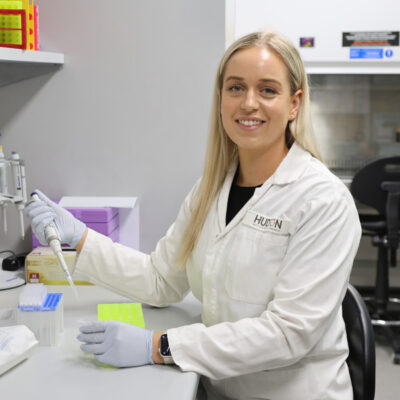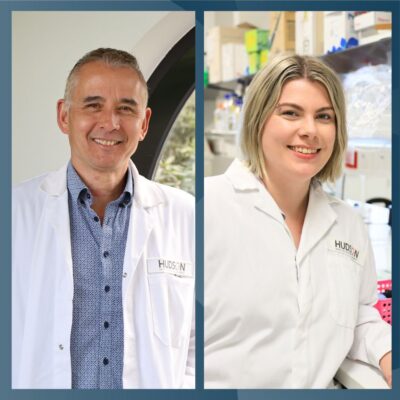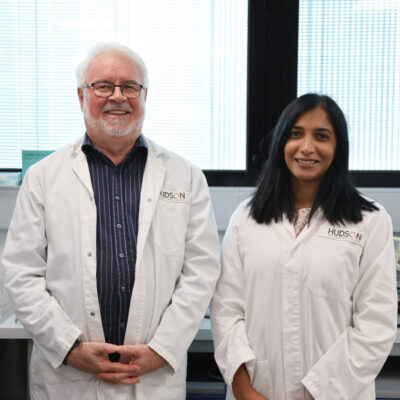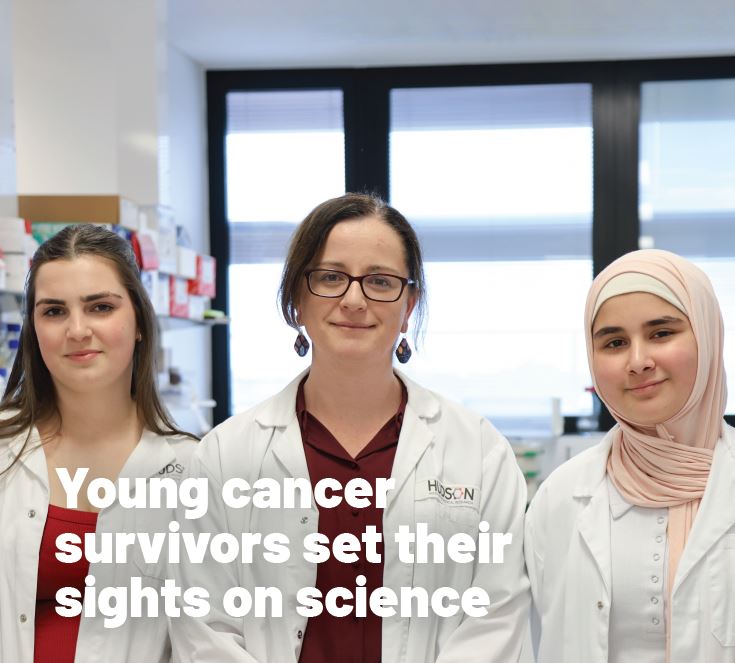Personalised cancer treatments a step closer
By Hudson Institute communications
In a world-first discovery, Hudson Institute cancer researchers have discovered two potential genetic markers which could be used to provide more personalised cancer treatments to some patients.
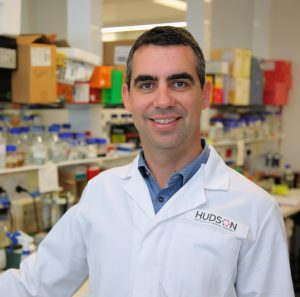
The discovery has significant implications for learning which patients, and which tumours, are likely to respond to an emerging cancer therapy.
Researchers, led by Dr Jason Cain, found that changes in two genes, TP53 and RB1, played a role in activating a developmental pathway, called Hedgehog signaling, which is implicated in a wide range of cancers. The discovery was published in The Journal of Clinical Investigation.
These two genes could act as genetic biomarkers in tumours that are likely to respond to cancer treatment drugs, known as Hedgehog inhibitor therapies. Many of these drugs are in clinical trials, with a small number approved to treat specific cancer types.
Dr Cain, Developmental and Cancer Biology Research Group Head, said the next step is to conduct a retrospective study, analysing cancer tissue samples for the biomarkers, in patients who have received Hedgehog inhibitor therapy.
“We could then correlate the biomarkers with how the patient responded to therapy. That would provide some strong evidence as to whether to proceed to a prospective clinical trial, which would actively recruit patients with changes in TP53 and RB1 genes, to receive Hedgehog inhibitor therapy,” Dr Cain said.
What is Hedgehog Signaling?
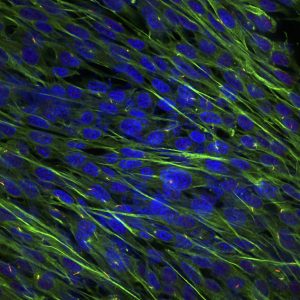
The Hedgehog signaling pathway is a developmental pathway activated in embryonic stem cells, playing a crucial role in babies’ growth in the womb. After its development role, the pathway is essentially turned off and lies dormant, unless there is a tissue injury in the body which can switch the pathway back on as part of the healing process. Problems occur when the pathway is activated in healthy tissue, which is associated with the development and progression of cancer.
Hedgehog pathway is active in a wide range of cancers
While many cancers feature higher levels of activity in the Hedgehog pathway, it is not known why or which ones. This study’s findings were focused mainly on Small Cell Lung Cancer (SCLC), which almost universally features loss of function mutations in these two genes, TP53 and RB1.
“We wanted to understand whether or not those mutations directly resulted in activation of the Hedgehog signaling pathway,” Dr Cain said.
Using a series of models, Dr Cain and his team were able to show how changes in the two genes led to activation of the pathway. Loss of function of both TP53 and RB1 is directly associated with an increase in a cellular organelle, the primary cilia, required for Hedgehog signaling, the study found.
Dr Vijesh Vaghjiani, a co-first author on the study said it may be possible to selectively screen for these gene mutations in cancer patients’ tumour tissue (such as those with SCLC) to determine whether personalised treatment with Hedgehog inhibitor therapy would work.
“Targeted (genomic) sequencing of tumours would give an indication of whether these genes were mutated. If they were, you could look at additional biomarkers such as primary cilia, because you need primary cilia for Hedgehog activation,” he said.
“If you had a tumour sample with mutations in TP53 and RB1, and also expression of primary cilia and Hedgehog ligand, then it’s likely that tumour would respond to a Hedgehog inhibitor therapy,” he explained.
What are TP53 and RB1?
TP53 and RB1 are genes which act as tumour suppressors. Many tumours will have mutations in TP53 or RB1 genes that disrupt their normal function. Essentially, these mutations enable abnormal cells to proliferate, leading to cancer. “These genes normally regulate cell death and cell division to prevent abnormal cells from growing,” Dr Vaghjiani said.
Collaborators | Garvan Institute of Medical Research, Victor Chang Cardiac Research Institute, University of New South Wales, University of Sydney, Royal Prince Alfred Hospital, Centenary Institute, ANZAC Research Institute and CancerCare Manitoba.
Funders | Victorian Cancer Agency, Cancer Council of New South Wales, Bailey’s Day, Australian Government Research Training Program, Monash University Postgraduate Publication Award, Science and Industry Endowment Fund STEM+ Business Fellowship in partnership with Mayne Pharma, Petre Foundation, National Health and Medical Research Council of Australia and Victorian Government’s Operational Infrastructure Support Program.
Contact us
Hudson Institute communications
t: + 61 3 8572 2761
e: communications@hudson.org.au
About Hudson Institute
Hudson Institute’ s research programs deliver in three areas of medical need – inflammation, cancer, women’s and newborn health. More
Hudson News
Get the inside view on discoveries and patient stories
“Thank you Hudson Institute researchers. Your work brings such hope to all women with ovarian cancer knowing that potentially women in the future won't have to go through what we have!”


